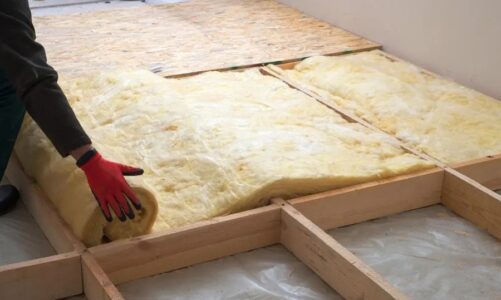Selecting a stone finish is more than an aesthetic preference; it changes how your surface looks, wears, and functions every day. The right choice can enhance color depth, manage glare, increase traction, and simplify upkeep, while the wrong one can magnify scratches or make spaces feel harsh under bright light. This guide walks you through the visual and functional differences between honed and polished finishes, with practical guidance for homes, workplaces, and exterior settings. You’ll learn how lighting, foot traffic, moisture, and maintenance routines influence performance over time. Whether you’re outfitting a kitchen, lobby, or terrace, this comparison equips you to balance design intent with real-world needs—something Stone Center helps clients do on projects of every scale. Throughout, we’ll reference Honed Vs Polished Stone considerations so you can weigh trade-offs with confidence.
Understanding Texture Differences Between Honed and Polished Surfaces
Honed surfaces are mechanically abraded to a smooth, matte to satin sheen using progressively finer grits, stopping short of the reflective stage. This finish softens veining and mutes color saturation slightly, reducing glare and delivering a tactile, velvety feel underfoot or to the touch. Polished surfaces are taken to ultra-fine grits and buffed, producing a mirror-like reflection that amplifies color vibrancy, vein contrast, and pattern clarity. Because the final polishing compacts micro-pores and flattens peaks and valleys, polished stone tends to resist immediate surface absorption better than a comparable honed slab. By contrast, a honed finish retains subtle microtexture that can accept light, controlled absorption, which often improves perceived grip.
Tactile feel and visual depth in different stone types
The character of Honed Vs Polished Stone varies by material—marble, limestone, granite, quartzite, and travertine each respond differently to abrasion and buffing. On marble and limestone, honing downplays fossil inclusions and softens veining for a calm, contemporary aesthetic; polishing intensifies contrast, lending a formal, high-lux look. Granite and quartzite often gain astonishing sparkle and color depth when polished, while a honed finish can reveal a silky, architectural flatness that designers favor in minimalist schemes. Travertine’s inherent voids read more tactile in honed form, whereas polish tightens the visual field and reflects more light, creating a smoother, sleeker impression. When you handle samples, pay attention not only to sheen but also to how microtopography affects perceived temperature, texture, and grip—details that matter in kitchens, baths, or entryways where daily contact is inevitable.
How Lighting Conditions Influence Stone Appearance Indoors and Outdoors
Light transforms stone finishes by defining how surfaces reflect or diffuse illumination throughout the day. Polished stone behaves like a series of tiny mirrors, creating strong specular highlights that can make a room feel brighter but also introduce hot spots under direct sun or high-output LEDs. Honed surfaces scatter light, producing a gentle, even glow that reduces glare and reads consistently across different viewing angles. In daylight, polished finishes can deepen shadows within veining, heightening drama, while honed finishes deliver a more uniform tone that feels calm and controlled. Outdoors, low-angle morning and evening light exaggerate polish reflections, whereas honed stone maintains visual stability across shifting natural conditions.
Managing glare, color perception, and fixture choices
Color temperature, CRI, and beam spread interact with Honed Vs Polished Stone in subtle but predictable ways. Warm 2700–3000K lighting tends to enrich polished marble and granite, while cooler 3500–4000K can make honed surfaces appear crisp and modern without reading flat. High-CRI (90+) LEDs reveal veining nuance in both finishes, though polish emphasizes contrast and honed smooths transitions. For task-heavy areas—kitchens and vanities—diffusers, wider beam angles, or indirect cove lighting help tame polished glare and preserve comfortable sightlines. In showrooms or galleries where drama is desired, accent spots on polished cladding can deliver cinematic highlights; for offices or family rooms, a honed field will keep reflections from distracting occupants throughout the day.
Slip-Resistance Considerations for High-Traffic and Wet Areas
Traction is a critical safety factor, especially in entries, kitchens, baths, and commercial corridors that see moisture or debris. Honed stone generally provides higher perceived grip than polished because microtexture interrupts surface water and reduces the chance of hydroplaning underfoot. Polished stone, by design, minimizes micro-roughness; this makes it easier to clean but also more slippery when wet or when dry dust acts like ball bearings on a glossy plane. In testing, dynamic coefficient of friction (DCOF) values for honed finishes often outperform polished equivalents on the same material, though results vary by stone density, mineral makeup, and sealers used. Always verify product-specific test data and consider local codes or guidelines for wet area flooring to ensure slip-resistance targets are met.
Best practices for choosing safe surfaces in real spaces
To balance safety with aesthetics, tailor finish selection to expected conditions and maintenance capabilities, engaging specification support from Stone Center for nuanced environments. For level interior floors subject to occasional moisture, a fine hone often hits the sweet spot between cleanability and traction, while textured or brushed variants can be considered for frequently wet zones. Where polished stone is desired on floors, limit it to low-moisture, low-traffic areas or combine it with strategic runners and effective entry mats to intercept grit and water. In showers, pool surrounds, and outdoor stair treads, prioritize finishes with measurable wet DCOF performance and pair them with appropriate drainage and cleaning protocols. Remember that contaminants—soaps, oils, sealant residues—can reduce grip, so regular neutral cleaning and periodic deep degreasing sustain the intended traction over time.
Maintenance Needs and Long-Term Care for Each Finish Type
Maintenance requirements diverge because sheen changes how a surface reveals wear. Polished stone showcases color and clarity but also makes etching, acid dulling, and micro-scratches more visible under raking light. Honed stone is more forgiving of daily scuffs and etch marks, dispersing reflections that would otherwise highlight imperfections, though it may darken temporarily with spills due to slightly higher surface absorption. Sealers influence both finishes: a honed surface may need sealing more often to manage absorption, while polished surfaces can go longer between applications but still require protection against staining and etching. Across both, stick to pH-neutral cleaners, avoid abrasives, and address spills promptly to preserve the finish’s intended appearance and achieve long-term maintenance consistency.
Cleaning routines and product selection that protect the finish
Daily care for Honed Vs Polished Stone should be simple and gentle to prevent cumulative damage. Start with dry dusting using a microfiber pad to remove grit that could abrade surfaces, then damp mop with a pH-neutral stone cleaner diluted per manufacturer instructions. For kitchens, conduct weekly degreasing with a stone-safe formula that leaves no residue, since leftover surfactants can attract soil and reduce traction, especially on honed floors. Inspect high-use zones quarterly; if water stops beading, reapply a breathable, penetrating sealer compatible with your stone type and finish. For etched polished marble or limestone, professional powder polishing or crystallization can restore gloss, whereas honed surfaces generally recover with a light re-hone or careful hand honing of localized marks.
Cost Factors That Influence Finish Selection in 2025 Projects
Finish choice affects budgets through fabrication time, tooling wear, and yield, all of which are sensitive to energy and labor costs that remain dynamic in 2025. Achieving a uniform polish requires extended machine time and higher consumable use, which can push finished costs above those for a comparable honed surface, particularly on hard quartzites and dense granites. Complex edge profiles magnify the difference, as polishing deep miters and intricate bevels takes multiple passes and careful inspection. Honed finishes can reduce shop time, but some stones demand additional sealing or field finishing to reach final tone consistency, which shifts costs back toward parity. Freight, tariffs, and quarry output also play roles; limited-lot marbles with high visual expectations may require over-ordering for selection control, regardless of finish.
Budget planning tips for 2025 procurement and scheduling
To value-engineer without compromising design, compare whole-life costs, not just square-foot prices, especially when weighing Honed Vs Polished Stone in large public areas. Sample with the exact lighting you’ll use on-site and request mockups that include sealer to avoid costly finish changes later. Confirm lead times for finishing and fabrication capacity early, as polish-intensive packages may extend schedules due to quality control checkpoints. Where appropriate, specify honed for floors and polished for vertical elements to balance labor, safety, and impact, and consolidate stone types to leverage volume pricing. Finally, build in allowances for professional maintenance touch-ups in hospitality and retail settings; predictable upkeep supports asset longevity and enhances budget certainty over the life of the project.
Where Each Finish Performs Best in Architectural and Landscape Design
Use context to guide your selection. On interior floors, honed finishes are widely favored for their comfortable tactile feel and reliable traction, particularly in kitchens, mudrooms, and commercial circulation. Polished stone shines on vertical surfaces—feature walls, elevator surrounds, and fireplace cladding—where it can deliver dramatic reflections without compromising safety. For countertops, polished granite and quartzite resist staining and offer bold color rendition, while honed marble or limestone can be beautiful in lower-traffic prep zones where patina is welcomed. Exterior walkways, terraces, and pool decks benefit from honed or textured finishes that retain grip across rain and dew, whereas polished is best reserved for covered vertical exteriors or sheltered thresholds.
Real-world scenarios that align performance with design intent
Consider a residential entry: a honed limestone or quartzite floor manages tracked-in moisture gracefully, while polished stone on the adjacent feature wall elevates the foyer’s visual drama. In a boutique hotel, honed lobby flooring supports rolling luggage and constant foot traffic, with polished stone behind the reception desk to create a luminous focal point under controlled lighting. For a family kitchen, honed flooring reduces glare and hides everyday scuffs, while a polished island slab in a durable material brings color depth and easy wipe-downs for casual dining. Outdoor patios perform best with honed or sandblasted finishes that maintain traction through seasonal changes, keeping the look balanced under bright daylight. When in doubt, request side-by-side mockups and consult specification experts at Stone Center to match material, finish, and environment for durable, beautiful results.




